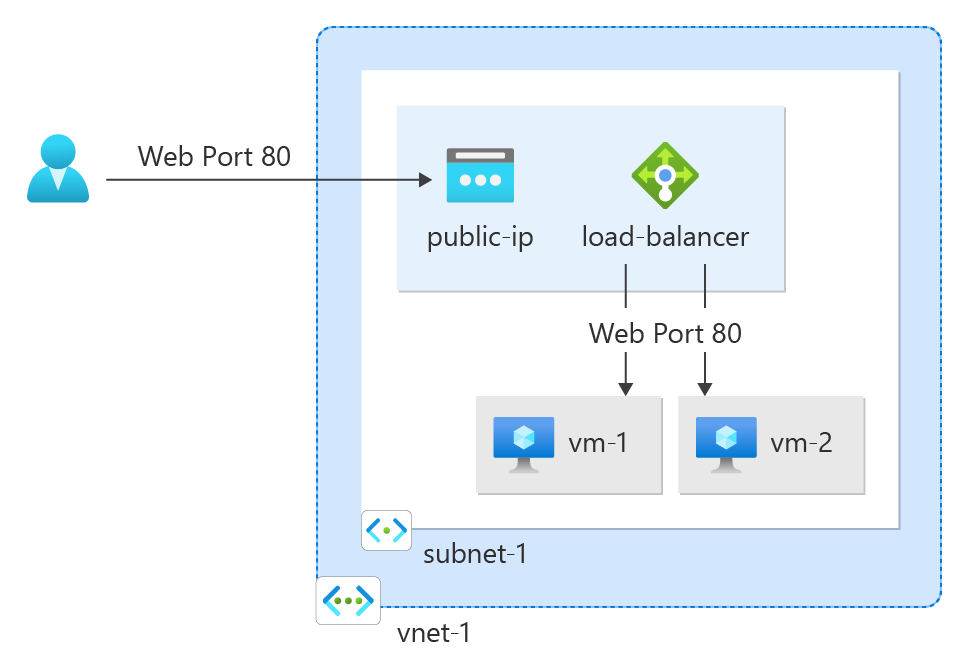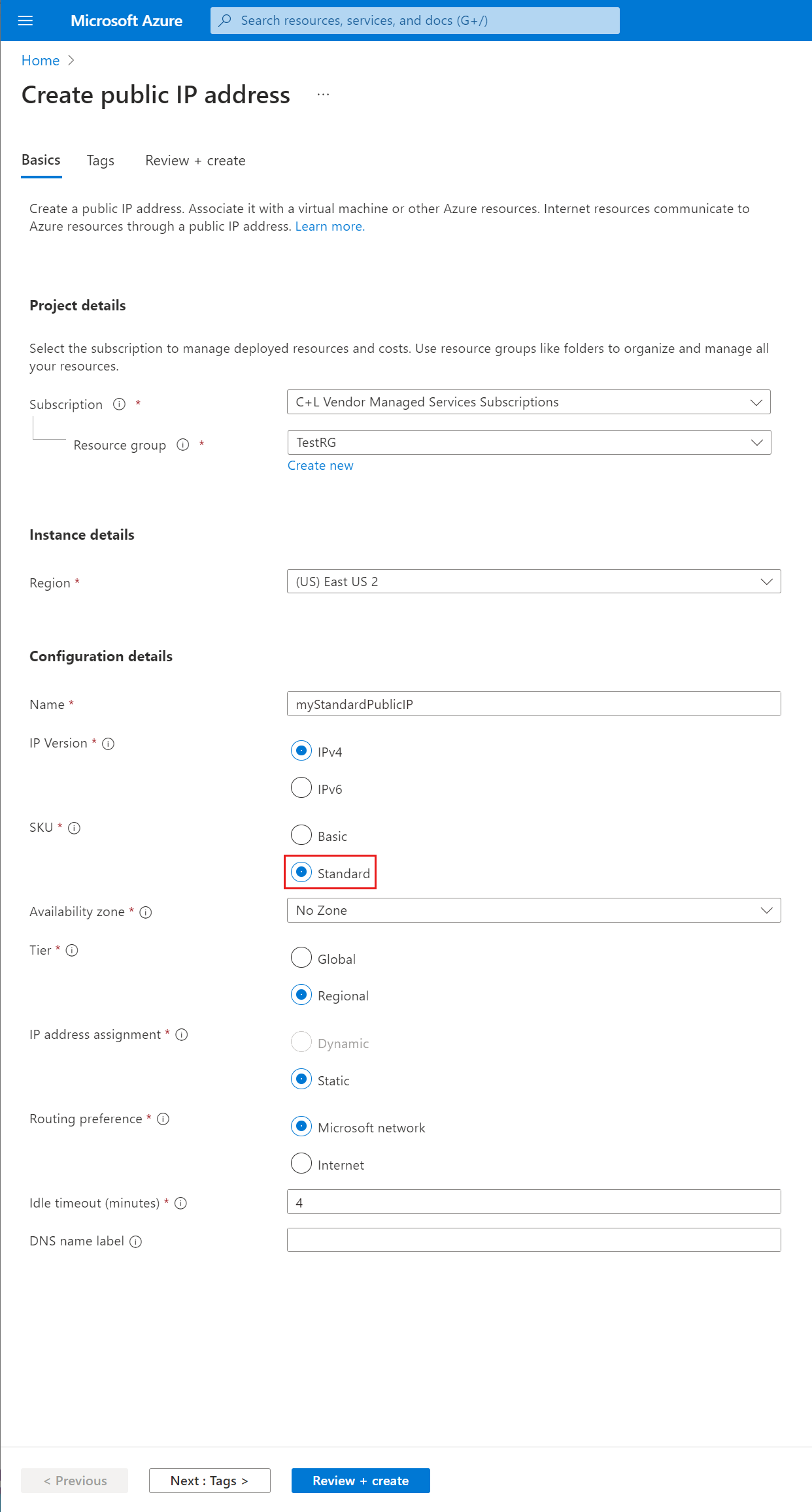Note
Access to this page requires authorization. You can try signing in or changing directories.
Access to this page requires authorization. You can try changing directories.
In this quickstart, you learn how to create Azure public IP addresses, which you use for public connections to Azure resources. Public IP addresses are available in two SKUs: Basic and Standard.

Prerequisites
- An Azure account with an active subscription. You can create an account for trial.
Sign in to Azure
Sign in to the Azure portal.
A public IP address with a Standard SKU is recommended for production workloads. For more information about SKUs, see Public IP addresses.
Create a Standard SKU public IP address
Follow these steps to create a public IPv4 address with a Standard SKU named myStandardPublicIP. To create an IPv6 address instead, choose IPv6 for the IP Version:
In the portal, search for and select Public IP addresses.
On the Public IP addresses page, select Create.
On the Basics tab of the Create public IP address screen, enter or select the following values:
Setting Value Subscription Keep the default or select a different subscription. Resource group Select Create new, and then name the group QuickStartCreateIP-rg. Region Select China North 3. Name Enter myStandardPublicIP. IP Version Select IPv4. SKU Select Standard. Availability zone Select No Zone. IP address assignment Only option is Static. Idle timeout (minutes) Keep the default of 4. DNS name label Leave the value blank. Domain name label scope (preview) Leave the default None. 
Select Review + create. After validation succeeds, select Create.
Note
In regions with availability zones, you have the option to select Zone-redundant (default) or a specific zone. The choice depends on your specific domain failure requirements. In regions without availability zones, this field doesn't appear.
You can associate the public IP address you created with a Windows or Linux virtual machine. For more information, see Associate a public IP address to a virtual machine. You can also associate a public IP address with an Azure Load Balancer by assigning it to the load balancer front-end configuration. The public IP address serves as a load-balanced virtual IP address (VIP).
Create a Basic SKU public IP address
Follow these steps to create a public IPv4 address with a Basic SKU named myBasicPublicIP:
In the portal, search for and select Public IP addresses.
On the Public IP addresses page, select Create.
On the Basics tab of the Create public IP address screen, enter or select the following values:
Setting Value Project details Subscription Keep the default or select a different subscription. Resource group Select Create new, and then name the group QuickStartCreateIP-rg. Region Select China North 3. Name Enter myBasicPublicIP. IP Version Select IPv4. SKU Select Basic. IP address assignment Only option is Static. Idle timeout (minutes) Keep the default of 4. Domain name label scope (preview) Leave the default None Select Review + create. After validation succeeds, select Create.
Clean up resources
When you're finished, delete the resource group and all of the resources it contains:
In the portal, search for and select QuickStartCreateIP-rg.
From the QuickStartCreateIP-rg screen, select Delete resource group.
Enter QuickStartCreateIP-rg for Enter resource group name to confirm deletion, and then select Delete.
Next steps
Advance to the next article to learn how to create a public IP prefix: